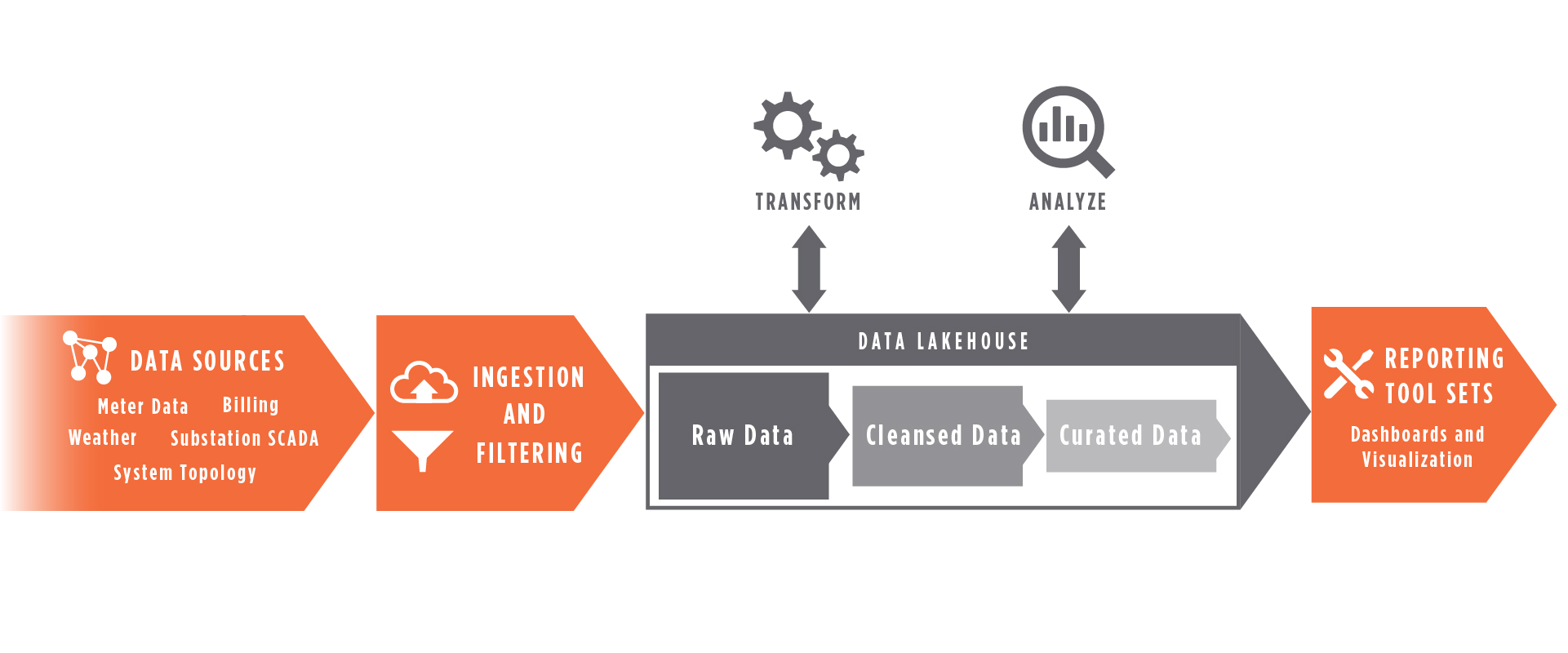Challenge
As a member-owned electric cooperative serving 170,000 customers in Virginia, REC has long known that the kilowatt-hours it purchases are not equal to the kilowatt-hours it sells. Rather than commissioning a study that would identify losses at a single point in time, REC had the insight to build a software system that would enable REC to automate the required loss analytics, creating repeatability.
Both operational and customer systems serve as repositories for large volumes of data that can be difficult to access, let alone provide insights for meaningful analysis. The path forward is to combine this massive data volume, sometimes called Big Data, into a single integrated data platform. These platforms can be organized to discover useful patterns in the data that may not have previously been apparent. In addition, they can provide information on customer behavior and choices they can be expected to make in response to market conditions.
REC had the vision to build a cloud-native data platform to ingest, organize, manage and secure the data that was needed for loss analytics, knowing it would serve as the data foundation for future automated and self-service analytics needs.
The data platform needed an architecture that could be deployed incrementally and allow data to be ingested in its source format, then later be transformed. This model enabled early use-cases to be deployed while providing support for more complex future use-cases not yet envisioned.
In addition, the platform needed to support the following operational capabilities to enable long-term viability:
- Scalability — The platform must ingest and manage REC’s largest datasets. It must be able to grow to meet storage requirements, while performing analytics and other data management operations in a performant manner.
- Elasticity — The system must scale up to meet performance requirements when performing analytics or machine learning.
- Useability — The solution must be easily used by the REC analytics and engineering teams and support the existing visualization and data access tools used by REC.
- Self-service — The platform must enable the organization to access data using industry standard tools. It must be usable by REC employees with little existing data knowledge.
- Manageable — The REC IT and analytics team must be able to manage the infrastructure with minimal uplift or assistance from external vendors.
- Cost-effective — The solution should not require a significant initial capital investment and should support a pay-for-use model.
- Extensible — Additional sources and analytics must be available with minimal rework.
- Fast deployment — The platform must be deployed in a timely fashion to support immediate project needs.
REC engaged 1898 & Co. to assist with designing and building this platform.




